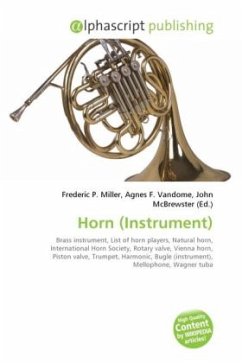The horn is a brass instrument consisting of about 12 feet (3.7 m) of tubing wrapped into a coil with a flared bell. A musician who plays the horn is called a horn player (or less frequently, a hornist). Descended from the natural horn, the instrument is informally known as the French horn, but since 1971 the International Horn Society has recommended the horn. Horns have valves, operated with the left hand, to route the air into extra tubing to change the pitch. Most horns have lever-operated rotary valves, but some horns like the Vienna horn use piston valves (similar to trumpet valves). A horn without valves is known as a natural horn, changing pitch along the natural harmonics of the instrument (similar to a bugle), but with a wide range of notes due to the long tubing. Three valves control the flow of air in the single horn, which is tuned to F or less commonly, B . The more common double horn has a fourth valve, usually operated by the thumb, which routes the air to one setof tubing tuned to F or the second set of tubing tuned to B . Triple horns with five valves are also made, tuned in F, B , and a descant E or F.
Bitte wählen Sie Ihr Anliegen aus.
Rechnungen
Retourenschein anfordern
Bestellstatus
Storno








